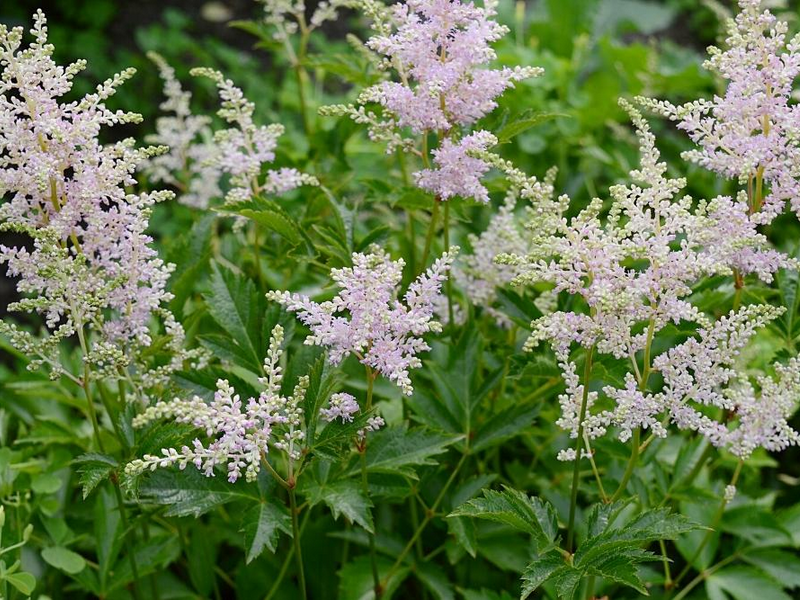Mountain Astilbe
Astilbe biternata
Click here to download a PDF of this plant information page (for printing).

Sun Exposure: Part Sun, Shade
Season of Interest: Spring, Summer
Bloom Time: June to August
Bloom Color: White, Pink
Height: 20 to 40 in.
Spread: 28 in.
Spacing: 30 in.
Water Needs: Average
Maintenance: Very little
Soil Type: Clay, Loam
Soil pH: Acidic, Neutral
Soil Drainage: Well drained
Pests: None
Diseases: None
Wildlife: Bees, Butterflies

Description:
Mountain astilbe is a herbaceous flowering perennial native to eastern North America. It does best in fertile moist soils that are well-drained but consistently moist. It is deer and rabbit resistant and black walnut tolerant.
The floral display is exceptional with a plume-shaped inflorescence of hundreds of tiny white or pink flowers held above the large leaves in late spring to early summer. There is plenty of nectar to attract many pollinators. Its showy floral display is exceptional and very unusual for a shade plant. It works well as a background plant in perennial planting beds, in woodland or shade gardens and makes for excellent cut flowers. For more information see:
plants.ces.ncsu.edu/plants/astible-biternata
Care and Growing Tips:
Astilbe plants grow best in part shade but can also grow in full sun or full shade. Astilbe will bloom in full shade, but the plants prefer some sunlight to achieve their full size. In hot weather and dry soils, the foliage will burn in full sun; here, some relief from the afternoon sun is necessary. Astilbe plants prefer fairly rich, moist soil, with a slightly acidic soil pH of around 6.0. The warmer the weather, the more moisture astilbe plants need, especially when situated in full sun. They do not handle prolonged periods of drought well; the leaves will brown and dry, and if left dry too long, the plants will die. In the absence of rain, water astilbe weekly and deeply at the base, avoiding overhead watering. Keep the soil moist but not soggy. Astilbe plants are tough and hardy plants that can survive winter, even in harsh climates. After the first hard frost, put down 2 inches of mulch around the stem to protect the roots.
Astilbe plants need phosphorus to bloom, so choose a fertilizer with the makeup of 5-10-5 or 10-10-10. Rake the fertilizer into the soil two weeks before you plant, or sprinkle a few granules onto the soil after the astilbe has been planted. Once the plant is established, fertilize every spring when the soil is moist. Apply the fertilizer on the soil and avoid getting any on the leaves, especially when they are wet, as the fertilizer will stick to them. Little maintenance is required of astilbe plants. The flower heads will dry on the plant and remain attractive for many months. The flowers can be cut whenever they start to look ragged, or left up for winter interest and cut back in the spring.